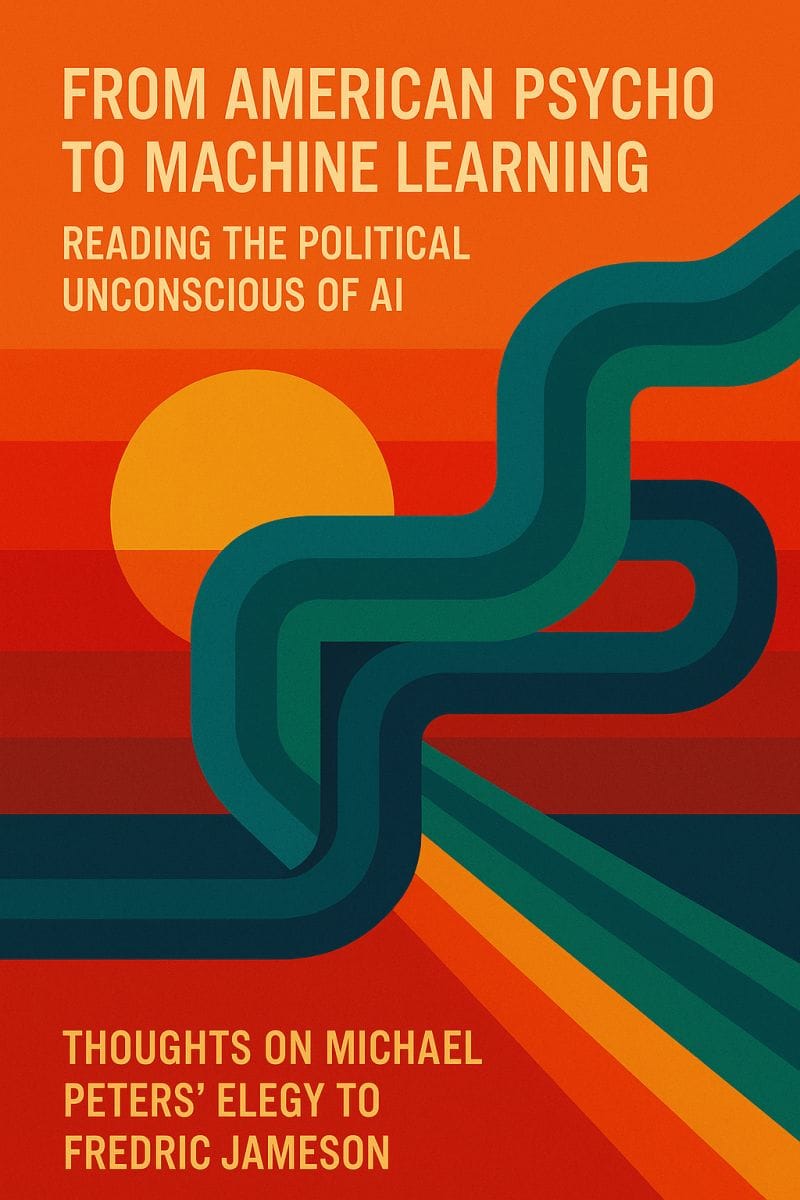From American Psycho to Machine Learning: Reading The Political Unconscious of AI

Thoughts on Michael Peters' Elegy to Fredric Jameson
By J. Owen Matson, Ph.D.
Michael Peters' elegy for Fredric Jameson —considers AI in light of Jameson's classic study The Political Unconscious. It's a brilliant pairing that reminded me how much Jameson’s thinking meant in another moment when culture seemed fully enclosed by capital, when the hashtag#Reagan-era sheen of commodity fetishism made it possible to imagine that history had been compressed into surfaces of wealth and violence that somehow felt both excessive and banal, the period that gave us Patrick Bateman and his business cards, pastel blazers on speedboats in Miami, the neon glamour of finance culture that had become its own self-advertising mythology. In 1984 Jameson published Postmodernism, or, The Cultural Logic of Late Capitalism in New Left Review, a text that seemed to diagnose with surgical precision the psychic compression of that very world and yet refused to leave it at the level of diagnosis, refused the despair of foreclosure that capital always tries to naturalize, and instead opened pathways into reading culture against its own seeming finality.
The maneuver, if that word can even capture it, was to treat postmodern culture as dialectical symptom rather than terminal condition, which meant that even the most depthless image-worlds—glossy advertisements, ironic pastiche, television ephemera—could be decoded as allegories of the historical system that produced them. Interpretation became an act of defiance, because to read surfaces for the contradictions they tried to efface was to resist their self-presentation as total.
He extended this method into what he called cognitive mapping, which was less an urban-planning metaphor than a way to orient ourselves within the expanding labyrinth of capital’s abstractions—global finance systems, new media ecologies, architectures that seemed to dissolve spatial perspective.
Even when the individual subject could not perceive the whole, to construct symbolic maps of the fragments was to engage in an act of collective orientation, a refusal to surrender to the vertigo of the system. And perhaps the most radical move of all was Jameson’s decision to read foreclosure itself—the sense that no alternative existed—as a legible symptom, which meant that even the experience of closure was historicized, turned back into ideology rather than fate.
That is what I hear resonating in Michael’s piece—the reminder that the algorithmic present, with its predictive engines and generative illusions, carries its own political unconscious that can be read with the same method. To say that AI outputs are neutral is already to miss the allegorical work they are performing, repeating exclusions, staging contradictions, producing utopian traces in the very act of simulating totality.